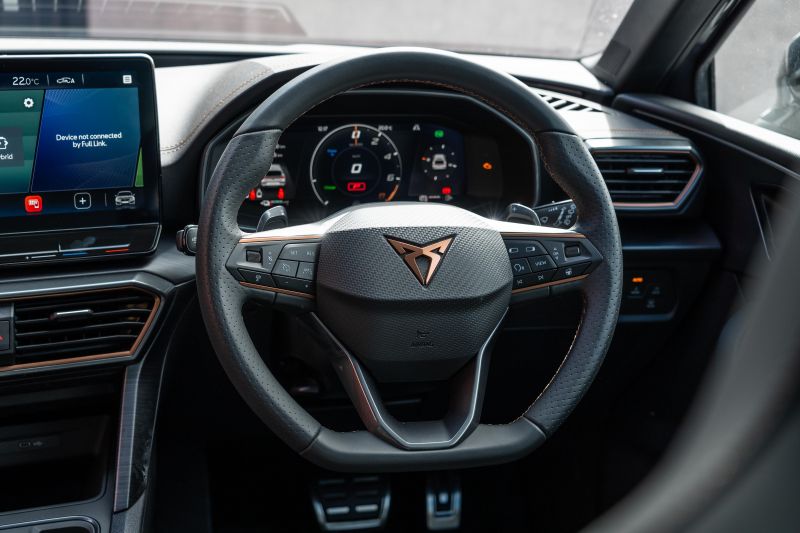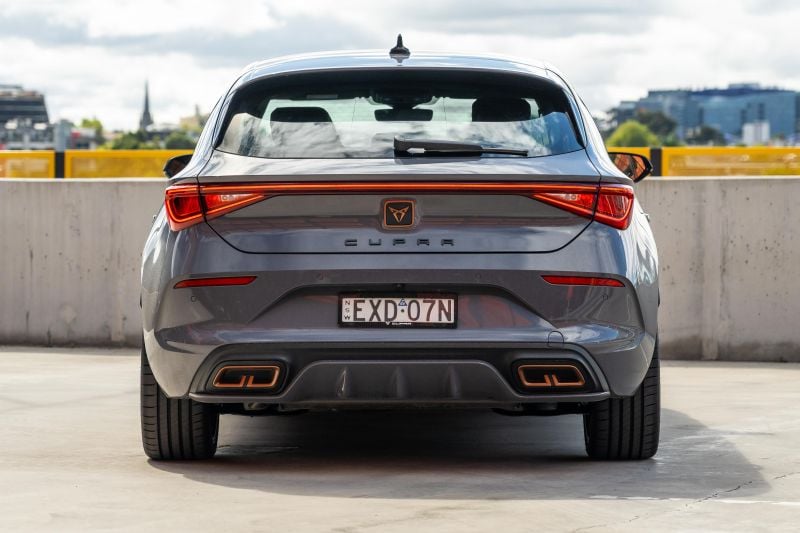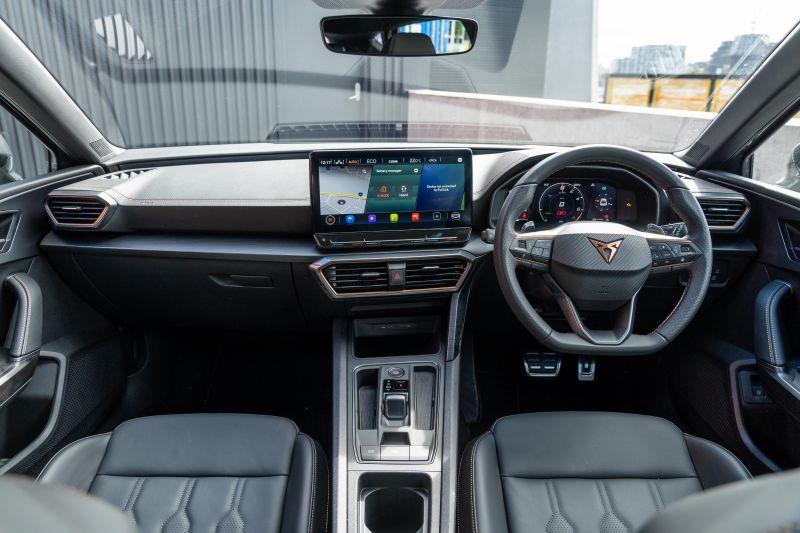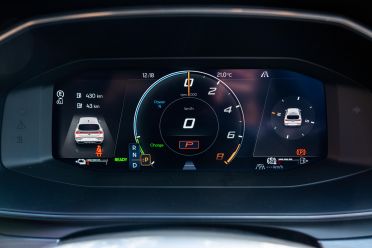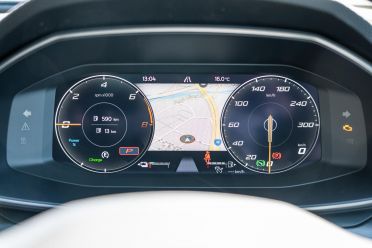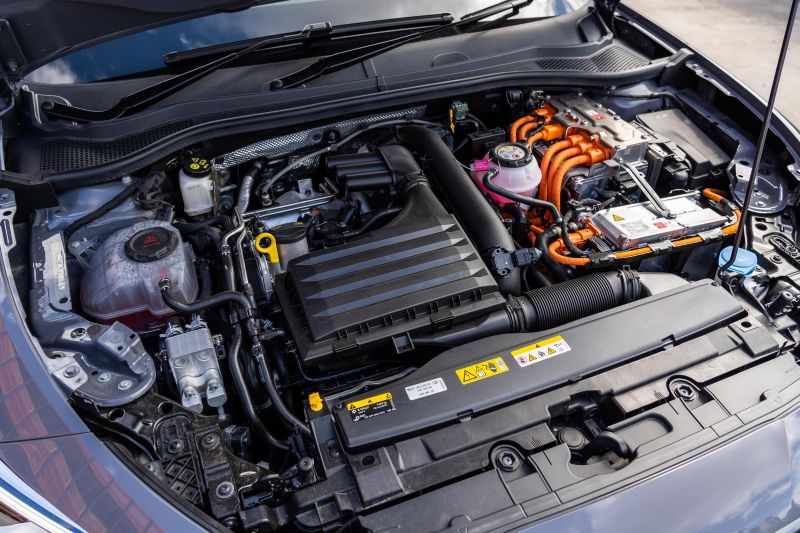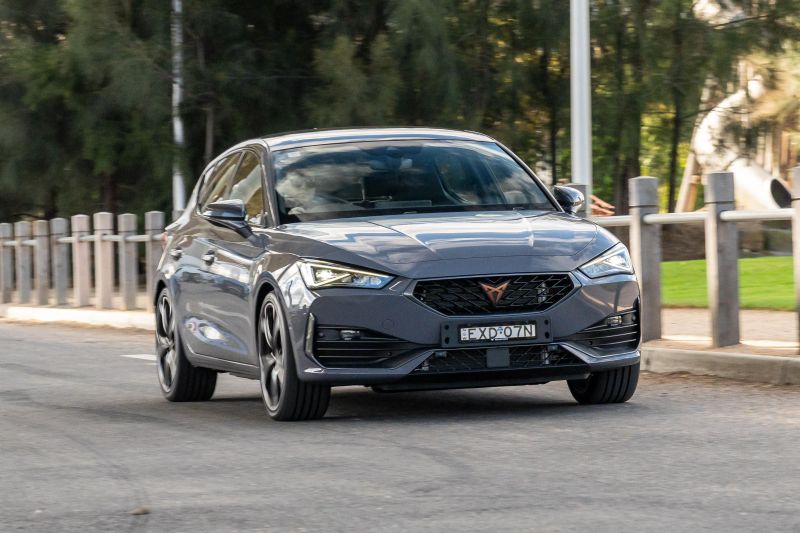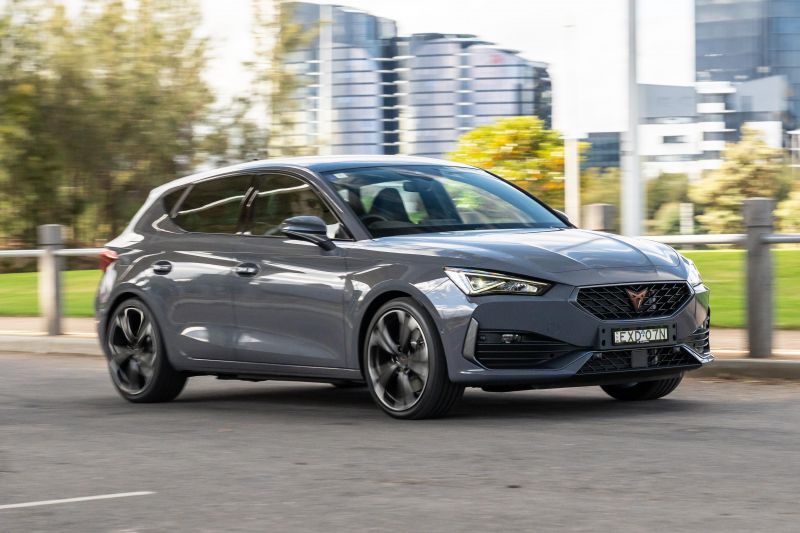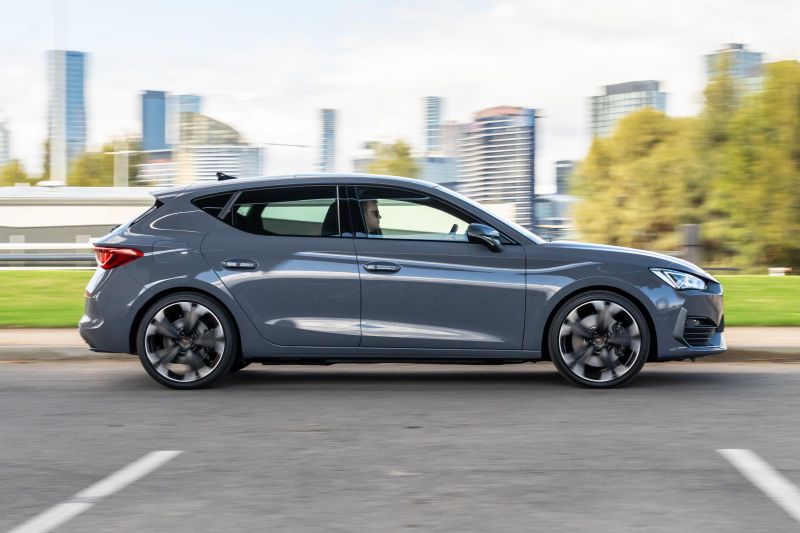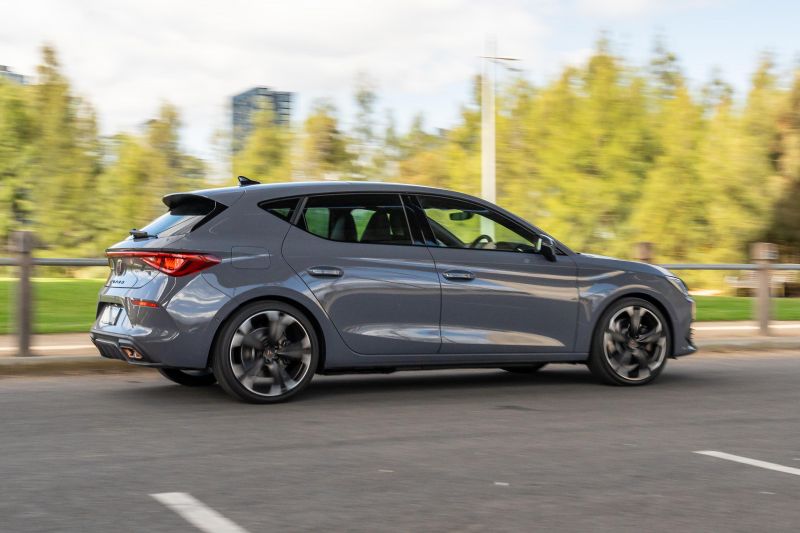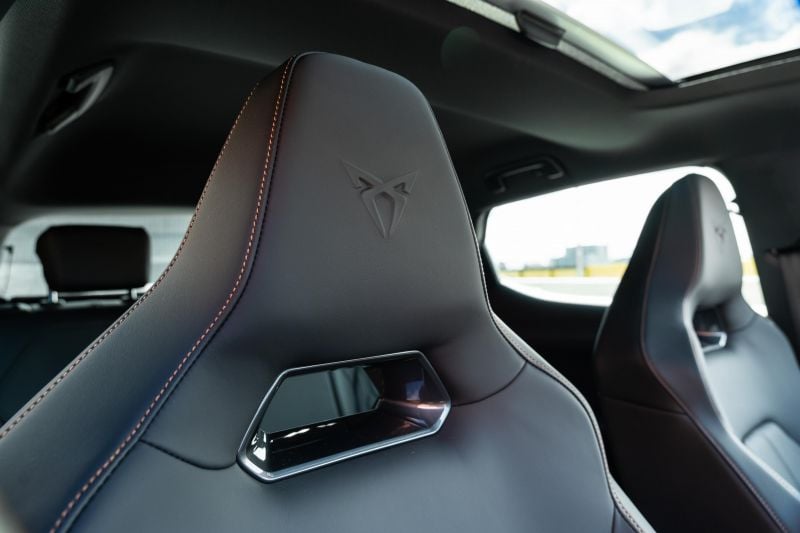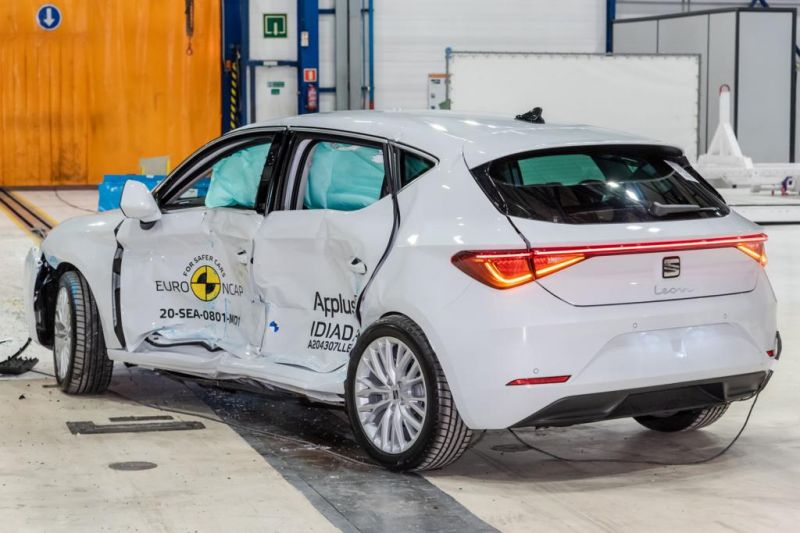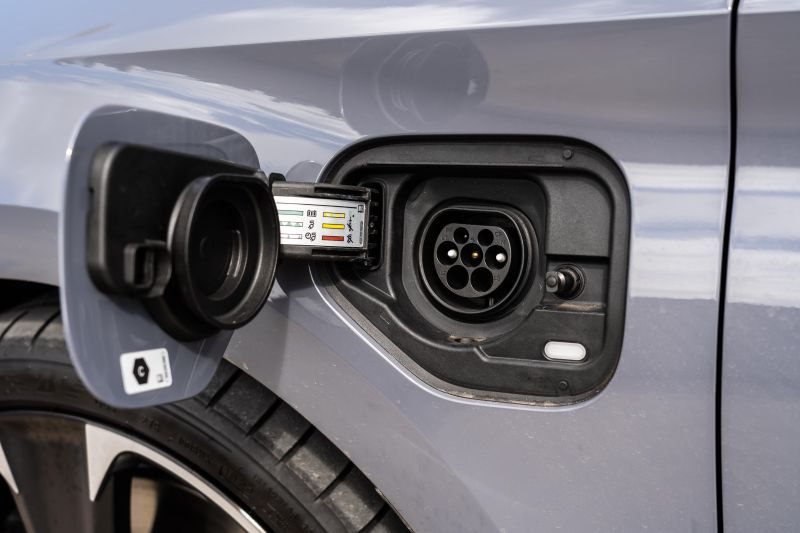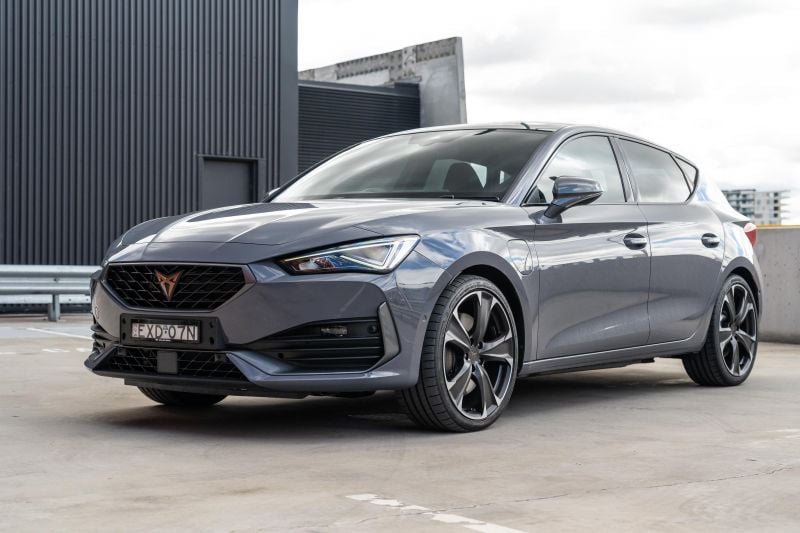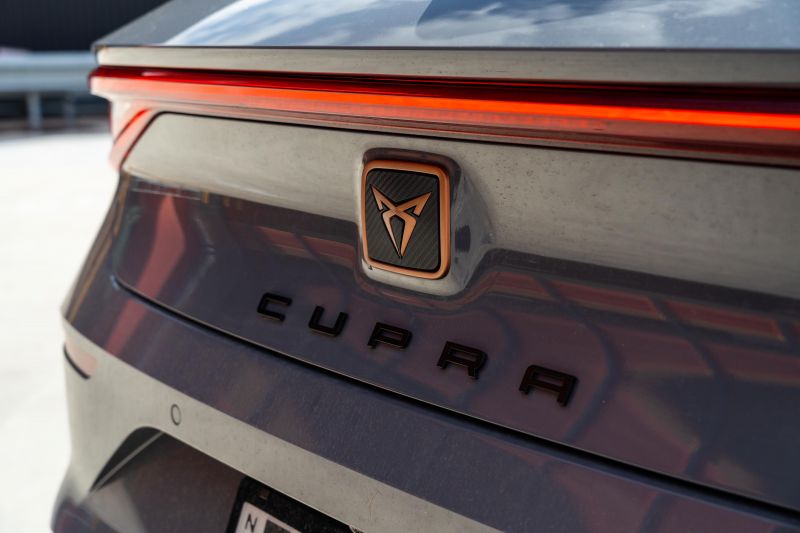The Volkswagen brand has been waiting all this time to get plug-in hybrid and battery-electric vehicles to Australia, and plucky young upstart Cupra goes ahead and beats them to the punch.
The fellow Volkswagen Group brand last year introduced the Leon VZe and Formentor VZe plug-in hybrids, later joined by the electric Born.
Plug-in hybrids (PHEVs) are outsold dramatically by both conventional hybrids and all-electric vehicles in Australia, which is perhaps puzzling given the feedback we so often hear from people. Specifically, PHEVs address one key concern consumers have about EVs: range anxiety.
With a PHEV, you theoretically have enough range to get you to and potentially even from your workplace on one charge, which means you may only ever use the petrol engine when you’re taking a longer trip on the weekend or if you forget to plug in overnight.
Yes, this brings more complexity, as you’re lugging around a big battery and a petrol engine; but in theory it allows you to have the best of both worlds.
Does that theory hold true with the Cupra Leon VZe?
How much does the Cupra Leon VZe cost?
The 2023 Cupra Leon VZe is priced at $59,990 before on-road costs, identical to the most powerful petrol Leon, the VZx. Both vehicles had their prices cut earlier this year to align them with the unrelated electric Born.
Driveaway pricing for the VZe differs per state:
- $62,990 drive-away in ACT
- $63,990 drive-away in QLD
- $64,990 drive-away in NSW
- $64,990 drive-away in SA
- $65,490 drive-away in VIC
- $65,990 drive-away in WA
Most metallic finishes are no-cost options, though a couple of shades – Graphene Grey and Desire Red – cost an extra $475. Our tester included the $2050 Leather Package and $1800 single-pane power sunroof.
With no Volkswagen Golf PHEV on sale in Australia yet (one is coming, eventually), the Peugeot 308 GT Sport Plug-In Hybrid hatch is the most direct competitor for the VZe, priced at $64,990 before on-road costs.
Until recently, the Mercedes-Benz A250e hatch was also on the local market, priced just shy of $70,000 before on-roads. It’s unclear whether it will return; its sedan counterpart was axed last year, and Mercedes-Benz Australia is pivoting away from PHEVs.
Perhaps the most direct threat to the Leon VZe, in true horror movie fashion, is coming from inside the house. The Formentor VZe is priced at $62,990 before on-road costs, and offers the same powertrain albeit with a more popular SUV body.
Is the Formentor worth the extra money? Perhaps not. Nevertheless, in our experience the Formentor couldn’t feel less like an SUV to drive, which may make it mighty tempting for some.
What is the Cupra Leon VZe like on the inside?
Cupra has done a commendable job differentiating the Leon’s interior from that of the related Volkswagen Golf.
Look closely and you’ll see shared switchgear – the light switches to the side of the steering wheel, the annoying climate control sliders. But it has a fresh look of its own, and makes the Golf look positively drab in comparison.
Cupra’s trademark copper colour can be found in the stitching details of the dash and steering wheel and lining the air vents, adding some welcome contrast. The company has also mostly avoided the scourge of gloss black trim.
Colour-adjustable ambient lighting also adds some flair, and the way the blind-spot monitoring lights seamlessly blend with the ambient light strips on the doors is a clever touch.
The dash top and the tops of the front doors are finished in soft-touch trim, while these doors also have leatherette inserts. Alas, you won’t find leatherette trim along the sides of the centre console like in a Peugeot 308 or Mazda 3.
The touch sliders for the air-conditioning remain a gripe, as they’re not illuminated and seem to exist only to allow Cupra to have a minimalist centre stack. You do get used to them, but that doesn’t mean they’re good design.
Fortunately, you can use voice prompts to adjust the climate control settings, while shortcut buttons are always visible on the sides of the touchscreen to allow you to easily adjust things like cabin temperature and heated seat settings.
Cupra products have their own unique graphics for the digital instrument cluster and infotainment touchscreen, and the tech in this car is a genuine highlight.
The digital instrument cluster is superb. It’s rare for me to find a cluster where there are actually multiple views I like, but Cupra’s UI designers have managed to craft one.
Highlights include:
- A display with two analogue gauges and a map in the middle
- A similar layout but with more angular graphics
- A “minimal” model, with just the speed in the middle and small configurable segments on either side
- An analogue gauge with a digital speed read-out in the centre and segments on each side, which was my favourite
- A weird, Tron-like display with a picture of the car driving across a grid
The infotainment interface boasts clear graphics, but in Cupra’s pursuit of form over function some useability has been sacrificed. For example, you have to go into a touchscreen menu to adjust the drive mode, where most rivals would have a simple, physical switch.
We did experience a couple of tech issues in the Leon. The wireless Android Auto would constantly drop out in Melbourne’s CBD, while on a couple of occasions the map view in the digital instrument cluster would get stuck on the location I started driving at.
On one occasion, the screen stayed on my starting point after around 20 minutes of driving. The map also had some mild visual distortion on occasion.
The Leon’s steering wheel doesn’t have the annoying touch controls found in some Volkswagen Group products, with actual buttons present. The classic Volkswagen Group height-adjustable armrest is present, and cabin storage is decent; the bottle holders in particular are worth noting, as they’ll fit even large blender cups.
Step into the back and there’s a competitive amount of space on offer. The rear bench is a bit low, but headroom, knee room and toe room were plentiful for someone around 180cm tall sitting behind a front-seat occupant the same size.
The bench is comfortable, and one passenger noted the headrests were “delightfully soft”. There are three top-tether anchor points for child seats, plus ISOFIX points for the two outboard seats.
While boot space shrinks from 380L to 270L in the VZe due to the battery hardware, we were still able to fit a large suitcase and a standard carry-on. There’s no spare tyre under the floor, though, with the VZe making do with a tyre repair kit.
What’s under the bonnet?
The Leon VZe mates a 1.4-litre turbocharged four-cylinder engine with 110kW of power and 250Nm of torque with an 85kW/330Nm electric motor, a 12.8kWh lithium-ion battery and a six-speed wet dual-clutch automatic transmission.
Total system outputs are 180kW and 400Nm, and like all Leons the VZe is front-wheel drive.
Cupra claims combined cycle fuel consumption of 1.8L/100km although, as with all PHEVs, this figure includes driving in pure EV mode. Claimed energy consumption is 11.3kWh/100km on the more lenient NEDC cycle, or between 15.1 and 15.9kWh/100km on the WLTP cycle. The Leon VZe also has a claimed 67km of WLTP range.
The range readout can sometimes be refreshingly conservative. On one mostly highway commute to the Melbourne office staying in EV mode, I started off with 48km of electric range and ended up driving 52km with 5km still available. Energy consumption during this commute was 16.6kWh/100km.
During my time with the car, I also depleted the battery and did a 75km economy loop with no charge. The end result was a fuel economy figure of 7.5L/100km. Finally, over the course of a week with the car and 533km of driving, we averaged fuel economy of 3.5L/100km and energy consumption of 9.6kWh/100km.
While I charged the car overnight at home and plugged it in at the office, the week did include a few trips where I exceeded the available electric range.
How does the Cupra Leon VZe drive?
The Cupra Leon VZe combines the best elements of a combustion-powered hot hatch and an electric vehicle with few compromises.
In E-Mode, the car’s EV mode, it genuinely feels like an EV with its effortless thrust and smooth power delivery. You can drive the VZe on pure electric power at speeds of up to 130km/h.
If you perform a kickdown – i.e., you push the accelerator pedal past the point you normally would – the car will temporarily fire up the petrol engine.
You can also drive the car in Hybrid mode, or simply wait for the battery to run out by which point it will drive like a conventional hybrid. With no charge, the Cupra can still drive on electric power at low speeds.
A slick energy flow metre displays what’s generating the power at any given time. There are no physical switches for EV or hybrid modes, with these functions nestled within the Battery Manager menu on the touchscreen.
Even more peculiar is the complete absence of a physical drive mode selector in what is ostensibly a sporty car. Even a Hyundai Venue has one of these, Cupra.
Transitions between petrol and electric power are generally pretty smooth, and with the battery’s charge depleted the Leon sounds like a regular turbocharged four-cylinder. Indeed, it actually sounds rather good, while you can enjoy an enhanced sound in hybrid mode when you select the Cupra or Individual drive programs.
The enhanced sound is a bit artificial, but it certainly sounds sporty. Note there’s no enhanced sound when driving in EV mode, though Cupra says it plans to introduce such a soundtrack, at least in its EVs.
The Individual mode allows you to tailor the adaptive suspension across a spectrum ranging from comfortable to slightly too stiff, while also tailoring the engine response, engine sound, adaptive cruise control and air-conditioning. There’s an impressive level of adjustability.
That’s really the overall theme of the Leon VZe – you can drive it as a hybrid or an EV, choose between multiple drive modes, and toggle between different levels of brake energy recuperation. There’s so much variety on offer here.
And yet, the Leon VZe doesn’t feel like it’s trying to serve too many masters. Take the ride quality, for example. It only suffers ever so slightly from that lumpy feeling some PHEVs have where you can feel the heavy battery down low, and it’s only really noticeable over more undulating surfaces. For the most part, the Leon rides firmly yet with an impressive degree of pliancy. Even on unsurfaced roads, it’s comfortable.
Wet Melbourne weather prevented us from taking the VZe for a proper fang, but some twisty road driving revealed it corners flatly and grip levels are high. The steering has a nice weighting and good amounts of road feel.
Without driving this back-to-back with a circa 100-140kg lighter petrol Leon, it’s hard to tell just how much the heavy battery blunts the car dynamically. In the context of the wider small car segment, however, it doesn’t feel at all ponderous and you’d scarcely realise it’s lugging a big battery around.
Settle into a cruise on the highway and you can take advantage of the nicely calibrated Travel Assist level 2 autonomous driving feature. There’s some wind rustle around the mirrors and some tyre roar, particularly noticeable in EV mode, but overall the cabin is quiet at high speeds.
Performance is brisk regardless of whether you’re in hybrid or EV mode, and Cupra claims a 0-100km/h time of 6.7 seconds. While it won’t push you back in your seat, there’s more than enough power to have fun, and that sprint time is just 0.3 seconds off the petrol VZ.
It’s all starting to sound like the Baby Bear’s bed of hot hatches, isn’t it? Not quite.
Axle tramp is prominent on hard take-offs, though if you’re not a leadfoot you may not notice this.
What is much more noticeable is an odd low-speed jerkiness and vibration, regardless of whether you’re driving in EV or hybrid modes. It mars the VZe’s otherwise commendable level of refinement.
What do you get?
The Leon VZe has the same basic level of specification as the entry-level V, albeit with 19-inch alloy wheels instead of 18s and the spare tyre swapped for a tyre repair kit.
Leon VZe highlights:
- Heated, power folding side mirrors
- LED headlights and daytime running lights
- LED daytime running lights
- Fog lights with cornering function
- Automatic headlights
- Automatic high-beam
- Rain-sensing wipers
- Rear tinted windows
- 12-inch touchscreen infotainment display
- Wired and wireless Apple CarPlay and Android Auto
- 10.25-inch digital instrument cluster
- Wireless phone charger
- Four USB-C ports (two up front, two in the rear)
- Heated, leather-wrapped steering wheel
- Paddle shifters
- Interior ambient lighting
- Black headliner
- Cloth sports bucket seats
- Driver profile selection
- Dynamic Chassis Control
- Progressive steering
- Keyless entry and start
- Auto-dimming rear-view mirror
- Three-zone climate control
- Illuminated sill panels
- Aluminium pedals
- Semi-autonomous parking assist
The optional Leather Package ($2050) adds leather upholstery (duh), as well as:
- Heated front seats
- Power driver’s seat with memory
- Mirror memory
- Dashboard with copper stitching
A power sunroof is a $1800 option.
Is the Cupra Leon VZe safe?
The Cupra Leon wears a five-star ANCAP safety rating, based on Euro NCAP testing conducted on the SEAT Leon in 2020.
It received an adult occupant protection rating of 91 per cent, a child occupant protection rating of 88 per cent, a vulnerable road user protection rating of 71 per cent, and a safety assist rating of 80 per cent.
Standard safety equipment includes:
- 10 airbags incl. front-centre, driver’s knee
- AEB incl. Pedestrian, Cyclist detection
- Adaptive cruise control with stop/go
- Blind-spot monitoring
- Rear cross-traffic alert
- Driver fatigue monitoring
- Lane keep assist
- Proactive passenger protection (pre-cash)
- Reversing camera
- Safe exit warning
- Travel Assist (adaptive cruise + lane centring)
How much does the Cupra Leon VZe cost to run?
Like the wider Cupra range in Australia, the Leon is covered by a five-year, unlimited-kilometre warranty.
For models with high-voltage battery components, there’s an additional eight years or 160,000 kilometres cover against manufacturing defects or “excessive loss of net battery energy”.
Cupra launched in Australia with three years of complementary scheduled servicing on all models, but this offer ended on March 31.
Now, Cupra is charging $990 for a three-year pack or $1990 for a five-year one. This undercuts the Peugeot 308’s plans, which cost $1200 and $2000, respectively.
CarExpert’s Take on the Cupra Leon VZe
Plug-in hybrids make a lot of sense in something like a large SUV, but we’re not sure buyers have been clamouring for a PHEV hot hatch.
Demand for PHEVs in Australia overall has been tepid, considering we don’t have any zero-emissions zones and there’s precious little in the way of PHEV incentives.
While that may mean the Leon VZe is destined to only ever be a niche player in Australia, we commend Cupra for bringing it here in addition to petrol and electric hot hatches.
Apart from some annoying low-speed jerkiness and vibration, it’s a genuinely enjoyable car, offering a responsive, sonorous turbocharged four-cylinder engine but also the ability to drive the car like a pure EV.
The range figure is competitive, the powertrain is responsive, and the ride and handling balance on point. Goldilocks would be pleased.
Click the images for the full gallery
MORE: Everything Cupra Leon

